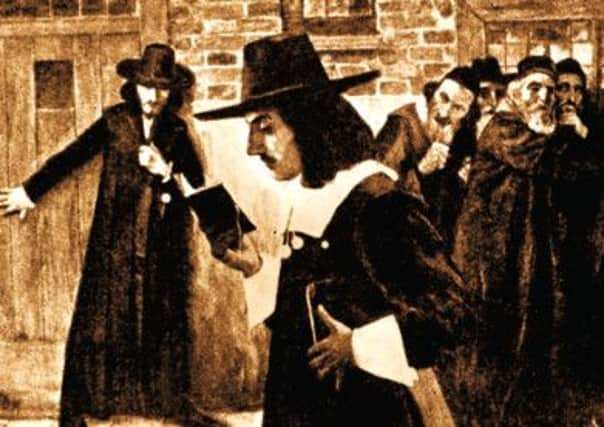Book review: The Blasphemies Of Thomas Aikenhead


The Blasphemies Of Thomas Aikenhead
Michael F Graham
Edinburgh University Press, £19.99
The use of tense is here important: at the time, no-one would have realised they were witnessing the final state execution for that specific crime. In some histories, such as Arthur Herman’s rather gauche and wide-eyed book, The Scottish Enlightenment, Aikenhead’s story is a gory overture and almost a necessary sacrifice. Other articles have provided important context and comparisons that erode the Victorian Thomas Macaulay’s vision of “the preachers who were the boy’s murderers... [who] insulted Heaven with prayers more blasphemous than anything he ever uttered”, again seeing Aikenhead’s death as an example of why Scotland had to be dragged into modernity and an incorporating Union with its more tolerant neighbour.
Michael F Graham uses the “microhistorical method” of writers such as Natalie Zemon Davis and Robert Darnton to give us the best account yet of Aikenhead’s life and hanging. It is painstaking research – all those fugitive legal documents and trawling through ancient library indexes – but it adds up to a rounded and enthralling if necessarily incomplete and speculative picture. Intellectual rigour and empathetic imagination are never easy companions.
Advertisement
Hide AdAikenhead’s crime was also a sin, and there existed in the 1690s a blurring of definition between the two, and who had the right to punish them. Politics and religion were not as clearly separated as they are now, and the General Assembly, the Council, the Parliament and the Judiciary were all composed of men of interlocking circles and backgrounds. Aikenhead was accused, by some of his fellow students, of calling the Old Testament “Ezra’s fables”, that theology was “ane rapsodie of feigned and ill invented nonsense”, that he preferred Islam to Christianity as he was “confident that in the year 1800 it would be utterly extirpat” and that “man’s imaginatione, raised by art and industry, could doe as much as our blessed Saviour did”.
These accusations are so various and self-contradictory that I can’t help imagining a group of young students, trying to out-do each other in cynical and intellectually capricious exaggeration. After all, Thomas Hobbes – and Origen – has questioned the literal truth of the Bible, most Reformation ministers would have agreed that much Catholic theology (such as Pope Gregory the Great’s Dialogues and even parts of pseudo-Aquinas) were “ill invented nonsense”, the fear of Islamic overwhelming of Europe would only be completely dispelled with the failure of the second Ottoman Siege of Vienna, two years after Aikenhead’s death, and the idea of human perfectibility was already being considered by Leibnitz.
Graham includes a wonderful cadenza towards the end comparing Aikenhead (born 1676) and Baruch Spinoza (died 1677) which is inspired. Spinoza was also ostracised by his religious community, and was accused of atheism when pantheism might have been the better term for his belief.
Graham is also excellent in sketching, both minutely and broadly, the state of Scotland in the 1690s. This was a period in the wake of Glencoe, and with much of the country’s capital tied up in the soon-to-launch expedition to Darien. The country was in the grip of famine, there were rumours of a renewed Jacobite campaign, and a large fire broke out in the Canongate. For a country which had schooled itself long in the idea of a new Covenant between Scotland and the Lord, this all must have seemed like the traditional punishments of God towards a backsliding, immoral people.
Graham compared Aikenhead’s trial to those of others accused of blasphemy: if God was angry, somebody must be doing something. He doesn’t, oddly, link this to the notorious execution of Thomas Weir in 1670: if an upright Calvinist might also be an incestuous Satanist with a magic walking stick, then surely the Devil was going about as a roaring lion, seeking whom he may devour, whom resist steadfast in the faith. The saddest part of this book is reading about all the attempts by decent, religious men to find some way around the charge and punishment: Sir John Lauder of Fountainhall is a new hero of mine.
Graham allows himself one indulgence towards the traditional Aitkenhead to Enlightenment narrative. He points out that the Gallowlee in Leith was used to make mortar for the New Town. Among the ground-up stuff would have been Aikenhead’s bones. I love the idea that David Hume lived in a house with Aikenhead’s pulverised remains in its very fabric, and hope some Scottish novelist deals with the conceit anon.